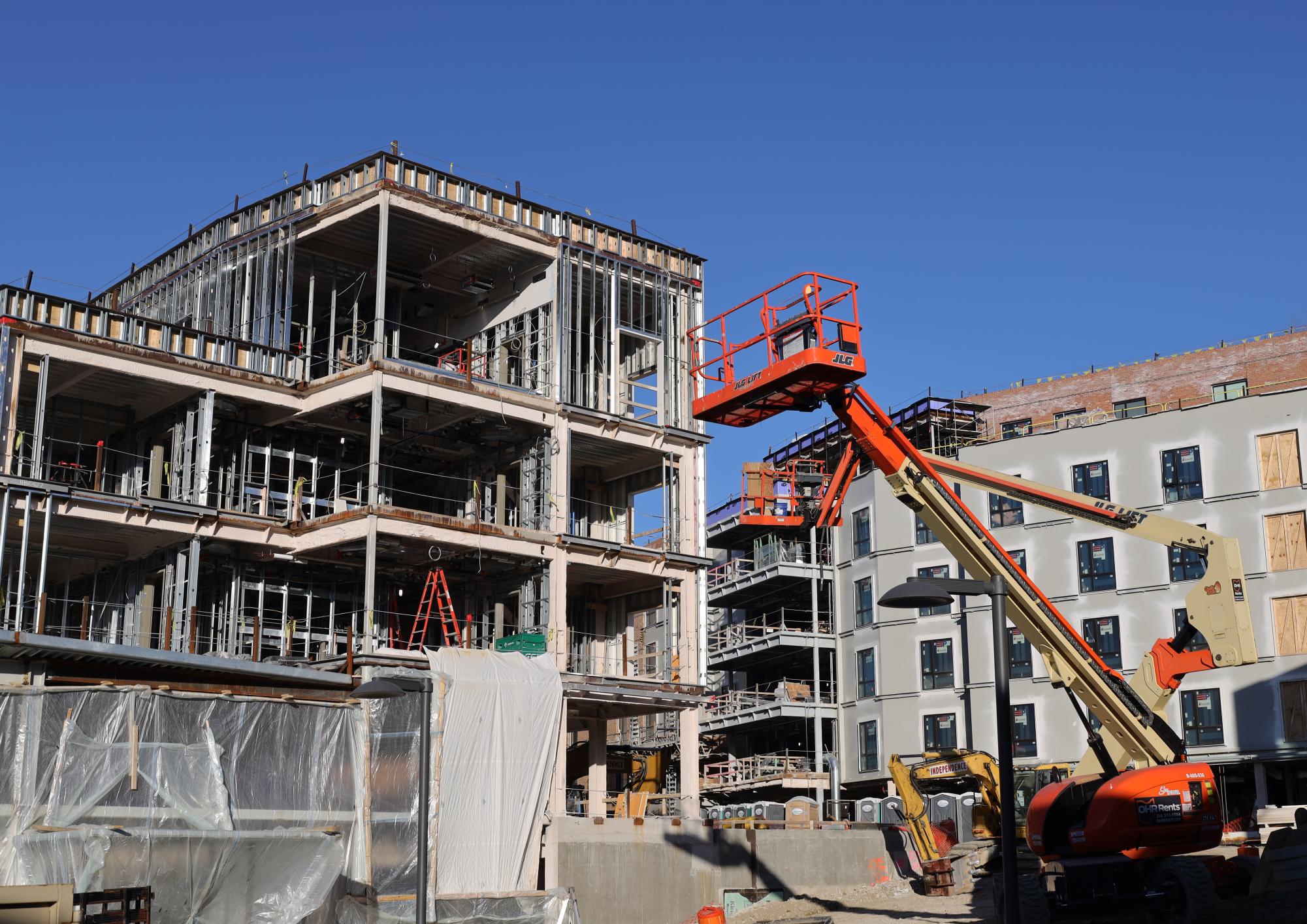In anticipation of the new South Residential Village (SRV) buildings opening in time for the fall semester, on-campus housing options for students are changing. The housing application will open the week of Feb. 19, and students can form groups of two, four or six, removing options for groups of three and five. Students who apply before March 18 can participate in the housing selection process, which will take place from March 21-29.
The new SRV residence halls will provide 600 beds in total, allowing the university to meet their increased need for on-campus housing due to growing class sizes. The SRV residence halls have been in consideration since the 2015 Campus Master Plan, but construction was delayed to July 2021 because of the COVID-19 pandemic. In the planning stages back in 2015, student feedback influenced the design of the new SRV halls. After receiving positive student feedback about North Residential Village (NRV)’s Stephanie Tubbs Jones (STJ) Residence Hall’s common spaces, the new SRV halls will also feature a variety of common spaces with rooms for studying, socializing and hosting larger events.
“I think the university … really looked into what sort of infrastructures people like in the existing buildings like the newer ones like STJ,” Nandita Patil, vice president of residential services in the Residence Hall Association (RHA), said. “Students really like the multipurpose rooms and stuff like that. So they try to incorporate a lot of that into the newer buildings, and I think that that reflection is what will get students coming to these buildings.”
The new SRV halls will mostly be composed of double rooms, and the university said that despite the corridor style floor plan, each floor contains sections that foster community among small groups of students. Floor plans were displayed in Tinkham Veale University Center on Feb. 2 and are available on the University Housing website.
“Each floor is comprised of smaller groupings of students to create small student communities,” the university said. “Additionally, the bathroom design will allow for a more homelike environment, allowing for more privacy and convenience.”
In addition to the room designs, the amenities available in the new SRV halls are new developments that are catered toward students. Both buildings will now have laundry rooms on each floor in hopes of solving the current issue of inadequate laundry machines seen throughout the current residence halls. Both halls will also have central air conditioning, another amenity for which students have been advocating. The hall closer to Murray Hill will feature a health clinic to address students’ health concerns.
Construction of the new SRV halls provided an opportunity for the university to reevaluate the existing housing options. The Triangle Towers will become a part of the Independent Living Experience for upperclass students, and The Monroe will no longer be used as on-campus housing. All currently operating SRV housing options for second-year students will still be available for the next academic year. Murray Hill buildings will be four-person suites featuring two study rooms, and buildings on Carlton Road will be six-person suites. Both buildings will be co-ed, however, only Kusch, Michaelson and Glaser Houses will offer co-ed suites.
“Living on campus provides easy access to study groups, campus events and the chance to build lifelong friendships. By centralizing our second-year housing, we aim to create a stronger sense of identity and shared experience for this class year,” the university said regarding how second-year students will now primarily be housed in the SRV.
The same sentiment is shared by RHA Executive President Patrick Wang who advocates for students living on-campus.
“Living on campus is a unique opportunity,” he said. “I feel like people should think about it as an opportunity. Not often in your life are you able to live almost exclusively with people who are your age, who have the same level of interest in academics or specific clubs and activities than in college. I think being in a residential community gives you a unique opportunity to form those connections and build this community of people who are like-minded and also who have diverse backgrounds.”
With the selection process quickly approaching, students have a lot to consider regarding their housing for next year. With plenty of options for second-year and upperclass housing, RHA is hosting residence hall tours of SRV and NRV from Feb. 17-18 at 11 a.m. to help students make their decision.




